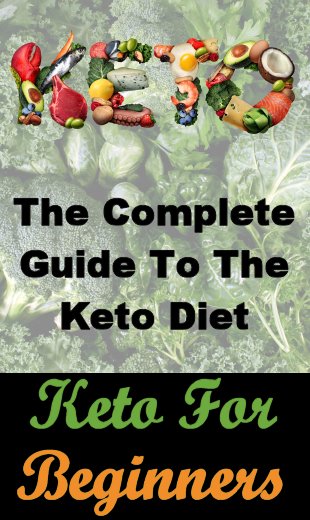How To Make Your Own Organic Skin Care Products
Our skin is our largest organ – for adults, it can weigh around eight pounds (that’s over 3.5 kg) and cover about 22 square feet (or two square meters).
And it does so much for us, including:
- Acting as a communication system between our brain and the outside world, via a massive network of nerve cells.
- Allowing us to move freely in all sorts of ways.
- Converting sunlight to vitamin D, which is vital for so many body functions (e.g. helping to use calcium for bone health).
- Helping to manage our body temperature (e.g. via perspiration).
- Keeping our inside where they belong – inside.
- Protecting us from the elements (e.g. harmful chemicals, sunlight, water).
Unfortunately, many of us do not treat our skins as well as we should.
Harmful Chemicals
Many of the substances we put on our skin contain toxic ingredients that can not only damage our skin, but also cause health problems internally too.
Some of the more common harmful substances include:
- Aluminium. This is found in a variety of products, including many antiperspirants and some types of make-up.
Aluminium in antiperspirants works by temporarily blocking the skin’s sweat ducts, but it can be absorbed into the skin where it will also have oestrogen-like effects.
There is also a connection between aluminium used in under-arm antiperspirants and breast cancer, although more research needs to be done in this area.
- Ammonia. This is found in a lot of cleaning products and is a powerful irritant that can cause headaches and breathing problems. It’s almost always inhaled during use and it can lead to bronchitis and asthma in the most serious cases.
- DEA, TEA and MEA. These three products, which are all types of ethanolamine compounds, are additives found in cosmetics such as foundations, moisturizers, and sunscreens. They are used as surfactants (i.e. compounds that lower the surface tension of liquids), which are well known to combine with nitrates to form nitrosamines – potential carcinogens.
Although people are advised to use sunscreens to prevent the risk of skin cancer, from exposure to the sun, recent research is suggesting that the sunscreens themselves may be causing the cancer.
And repeated application of DEA is also shown to cause liver and kidney damage in animals.
- Fluoride. This is found in toothpastes and is claimed to be effective in preventing tooth decay (which is why it is added to city water supplies in many parts of the USA, even though this is effectively medicating people without their consent and without being able to control the dosage).
Unfortunately, though, it’s also strong enough to actually cause damage to the enamel and it’s something that you’re better off avoiding wherever possible, unless you want to experience ‘mottling’ or ‘fluorosis’.
Studies in Japan have also shown that fluoride can lower your IQ by a few points.
- Lead. Lead was removed from school pencils long ago because it was found to cause a number of health issues – and yet it is still commonplace in make-up.
- Oestrogenic Compounds. These compounds can be found in everything from shampoos, to Tupperware, to make-up. They include parabens (used as preservatives), placenta extracts, and more, and many such compounds are also carcinogenic.
For men, too much oestrogen can lead to lower muscle mass, more body fat, lower sperm count, and possibly even depression, lethargy and infertility!
- Parfum. This is a catch-all that describes a large number of synthetic compounds used to add “fragrance” to products. These products include both perfumes and aftershaves, which are specifically designed to be used as fragrances, but it also includes other products such as shampoos and fabric softeners where scents are added.
Parfums are well known for causing a range of problems including dizziness, headaches, rashes, skin discolouration, and more. Some studies also suggest that they can affect the central nervous system and lead to mood disorders such as anxiety and depression.
- Phthalates. These are extremely difficult to avoid these days and are found in everything from body lotions and hair sprays to nail polishes. These are used to strengthen the parfums but they can introduce other issues, including reproductive problems and an increased risk of breast cancer.
The key take-away from this is to remember that anything that comes into contact with your skin, or anything that you inhale, will eventually enter your bloodstream. Estimates suggest that this process takes less than 30 seconds!
So, if you wouldn’t feel comfortable eating it, then don’t rub it on your body or spread it around your house!
Healthier Organic Alternatives
The good news is that there are healthier, organic alternatives to many of the commercial products that contain these harmful ingredients – ones that you can easily make at home, where you get to control exactly what goes into them.
By “organic,” what I really mean is “without using artificial products”. The term organic can also be explained as “relating to or derived from living matter”. That doesn’t mean that the ingredients are necessarily alive, but it does mean that they must be natural and “related” to living things.
For example, minerals count as organic but rocks are obviously not alive. But because rocks are created by the tides, and because they are found naturally inside the body (yes, your bones are made from calcium and magnesium just like that found in nature), they count as organic.
The remainder of this article will look at four specific types of such products:
- Face Masks.
- Soap.
- Sunscreen.
- After-Sun.
They are made using essential oils, which create a very gentle and fully natural-seeming scent that is far more calming and soothing than anything that can be accomplished with harsh chemicals.
More importantly, these products will almost always be much healthier for you. That’s because you’re getting the naturally occurring nutrients, minerals, and vitamins from the natural products themselves.
Organic Facials And Face Masks
The whole idea behind facial masks is to help nourish the skin, open up the pores, allowing them to breathe, and unclog those pores (e.g. by eliminating bacteria and dirt which can cause spots and blemishes).
There are also facial scrubs that literally let you scrub away the top layer of dead skin cells, helping your skin to glow and look refreshed, and also allow the sun to penetrate deeper and create that essential vitamin D.
Then there are face masks, which are designed to be left on your skin for a short time only. This, combined with the opened-up pores and cleared upper skin layer, means that those all-important nutrients are better able to reach the deeper layers of the skin where they can rejuvenate and support your tissue for a healthier look.
And lastly, there is the facial, which is like a simple massage using lotions and oils, which helps you to relax and relieve tension headaches.
It’s a nice idea, which is why it’s a shame that so often these products include harmful, synthetic ingredients that can trigger allergic reactions, damage the skin, and potentially even cause other, more serious health problems.
Fortunately, it’s possible to make your own organic mask and to give yourself a natural facial at home.
In its simplest form, the base comprises coconut oil and sugar. The coconut oil nourishes your skin and helps to bind the mixture, while the sugar provides the “scouring” element to help open up your pores and remove any dead skin cells.
So, to make a simple facial mask, all you need is to thoroughly mix the following ingredients together:
- A quarter cup (which is about two fluid ounces) of granulated sugar
- Half a cup (which is about four fluid ounces) of coconut oil
- Half a teaspoon of citrus essential oil
- One tablespoon of citrus fruit zest, although this is optional
Other common ingredients you can use in a face mask include:
- Avocado
- Banana
- Honey
- Lemon
- Melon
- Oatmeal
- Any essential oils.
Note that you should never apply an essential oil directly to your skin without first diluting it. In the above case, the coconut oil (and sugar) fulfil this role, but you can also buy what are called carrier oils (e.g. grapeseed) specifically for this purpose.
Organic Soap
As discussed above, many commercially available store-bought soaps include ingredients you really shouldn’t be putting on your skin (e.g. dyes, fragrances, oestrogenic compounds, phthalates, and triclosan, which is toxic and carcinogenic), because they can cause allergies, dryness, and rashes, amongst many other problems.
And as I also said above, anything applied to your skin ends up in your bloodstream, in remarkably little time.
However, when you use organic soap, it will not only not be harmful – it can actually be nourishing and healthy.
For example, most natural organic soap will use some kind of essential oil, many of which are antibacterial and antimicrobial (which is why they work). Not only that, they can be naturally fragrant and moisturizing, and filled with great nutrients.
So instead of stripping your hands of their natural chemicals and smelling like a hospital, you are providing your skin with natural and helpful minerals and vitamins.
Even in our early days as humans, we used a natural moisturized – mud! Yes, that too is full of beneficial minerals and other nutrients.
But on the assumption you’d rather not go for a mud bath up in the hills, then here is how to make your own organic soap.
These are the ingredients for a great organic soap:
- Three cups (that’s about 24 fluid ounces) of glycerine soap base
- A quarter cup (which is about two fluid ounces) infusion of lavender flowers and rosemary leaves
- One and a half teaspoons of lavender oil
- Half a teaspoon of rosemary oil
- One teaspoon of pulverized dry rosemary
To make the infusion, you simply need to pour steaming water over the plant parts and steep for around ten minutes. And the water should ideally also be non-chlorinated.
In terms of what you do with the ingredients, you need to start by melting down the soap base.
Then, you can add in the flavourings (and any colourings, if you want – but make sure these are organic too), stir it up, and then let the mixture harden.
This short video shows how easy it is:
Note that some people who have very dry skin may find the above recipe a little on the harsh side, in which case you can try using different combinations of essential oils to try to avoid those stronger ingredients.
As mentioned above, essential oils don’t just smell great, they can also act as antibacterials, antifungals, anti-inflammatories, and even analgesics.
This means that the soap described above will not only look and smell beautiful, but it will also be perfect for soothing, healing and cleaning your skin.
And you can add and remove essential oils to your liking, to create something safe for your skin and that you’ll enjoy the smell of.
Organic Sunscreen
If you spend too long out in the sun you’re probably going to get burned! Some people will burn faster than others, but it will affect anybody given enough time.
So while being out in the sun and daylight is good for you in many ways (e.g. boosting vitamin D levels, better sleep), you do need to be careful not to overdo it.
The good news is that when you use the right sunblock and after-sun products, you can improve your overall health by nourishing your skin and by deflecting the sun’s rays, without any of the harmful aspects of using harmful chemicals.
Because as many as 75% of sunscreens are made with toxic chemicals – they can release free radicals when they are exposed to sunlight. This is bad news given that free radicals can lead to oxidative damage, which is one of the causes of aging skin.
Others sunblocks can cause allergic reactions and damage the skin, while some contain synthetic oestrogens (e.g. oxybenzone, methoxycinnamate, and PABA, all of which are potentially carcinogenic) that can prevent men from producing enough testosterone.
And as before, all of them get absorbed into the bloodstream.
But even worse, many of those commercial sunscreens prevent you from receiving the benefits of the sun, such as vitamin D production.
Something else to be aware of is that sunscreens are not regulated in the US – and they haven’t been since 1978. The only information you can glean from the packaging in most cases is the SPF factor – but this doesn’t tell you anything about the effectiveness of the product against UVB rays.
In fact, the FDA is quoted as saying, in 2007: “The FDA is not aware of data demonstrating that sunscreen use alone helps prevent skin cancer.”
So, how can you make your own, organic sunblock, which does not have these problems?
Well, you can use any ingredient that is able to reflect the harmful rays of the sun.
And many of the oils you’ll find naturally actually do reflect these harmful rays to some degree – at least to the same extent as regular sunblocks and often more so.
By way of example, here is a list of a few natural ingredients, together with the amount of sun production they can each offer:
- Almond oil – SPF 5
- Carrot seed oil – SPF 35 – 40
- Coconut oil – SPF 4 – 6
- Red raspberry seed oil – SPF 25 – 50
- Shea butter – SPF 4 – 6
- Zinc oxide – SPF 2 – 20
So any of these ingredients will act as an organic sunblock if you’re trying to protect yourself from sun damage.
Of course you’ll need to add a few other things as well in order to make this into the best sun cream, otherwise, it won’t have the right smell or viscosity to do its job effectively.
So, to get started, follow this recipe:
- Half a cup (which is about four fluid ounces) of almond oil
- A quarter cup (which is about two fluid ounces) of coconut oil
- A quarter cup (which is about two fluid ounces) of beeswax
- 2 tablespoons of zinc oxide
- Essential oils for scent
You can then mix these all together by heating them over a pan of hot water, stirring them well, and then pouring the mixture into mason jars.
Organic After-Sun
In the same way that commercial sunscreens can be toxic and harmful, so can many after-sun products.
Fortunately, any number of organic products you may already have around the home can be used to make your own after-sun lotion.
For example, any essential oil that is moisturising and anti-inflammatory will work great as an after-sun product by helping your skin to repair itself and restoring the lost moisture.
Likewise, a lot of people like to use coconut oil, which is again filled with nutrients, as well as being naturally cooling.
Many essential oils also have an analgesic effect too – such as lavender oil or eucalyptus (which is also antispasmodic).
Conclusion
While you can buy organic versions of many of the products discussed above, you still need to read the labels really carefully, because some might not be 100% organic – e.g. one or more ingredients may be, but others may not.
So while making your own is more work, the benefits are:
- You get to choose exactly what you put in the products.
- In the long run, you can save money doing it this way.
- It’s not actually difficult.
- It can be fun – and maybe something you can get your children to help with (providing they’re old enough and well supervised, of course).
- Home-made skin care products make great gifts for friends and family.
You may even find you enjoy it so much that you want to start your own business (e.g. on Etsy, which was specifically created to provide a marketplace for crafters to sell their products)!
Additional Resources
These are suggestions for those who wish to delve deeper into any of the above, and all of the turmeric products are ones I use:







